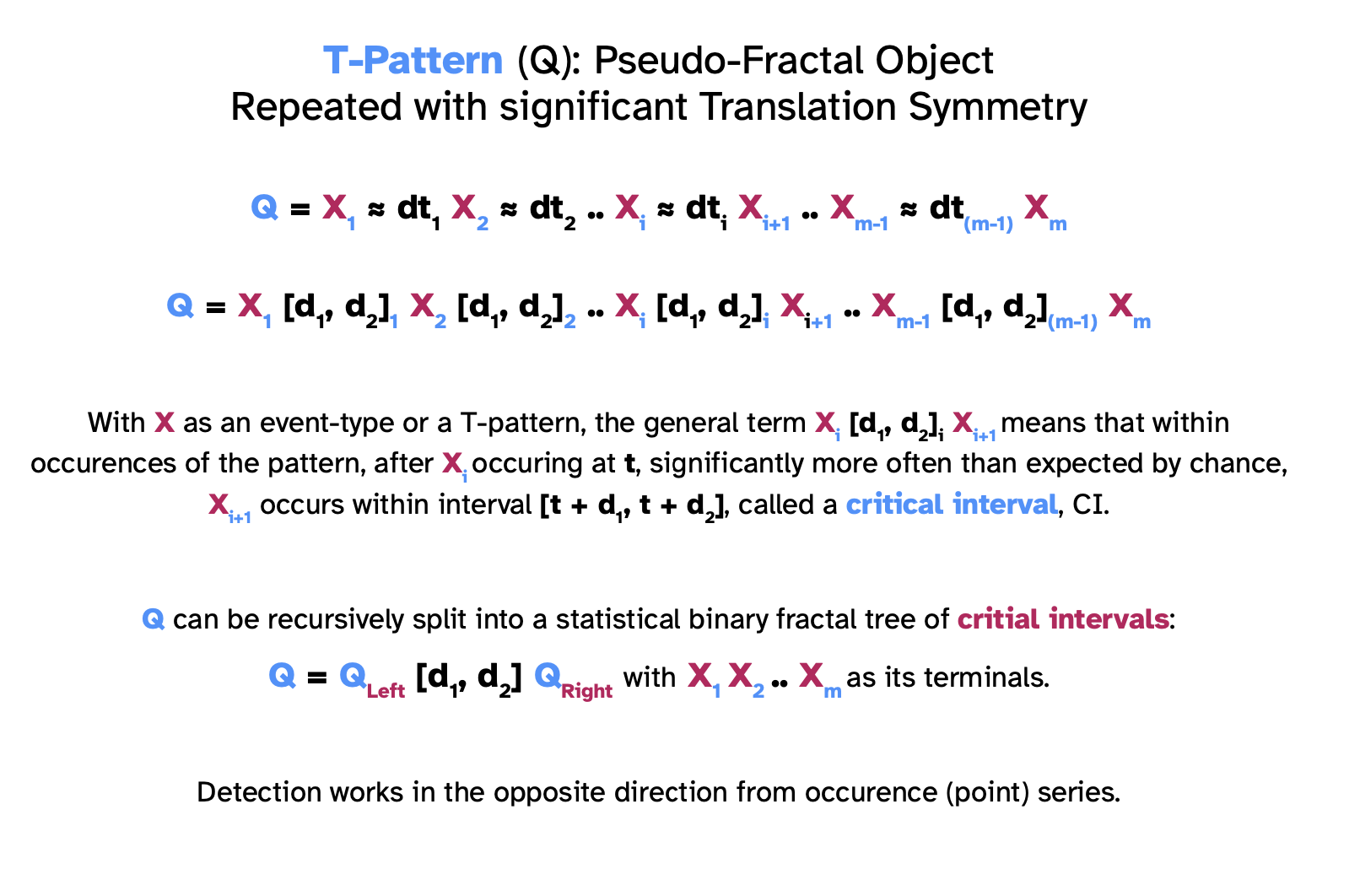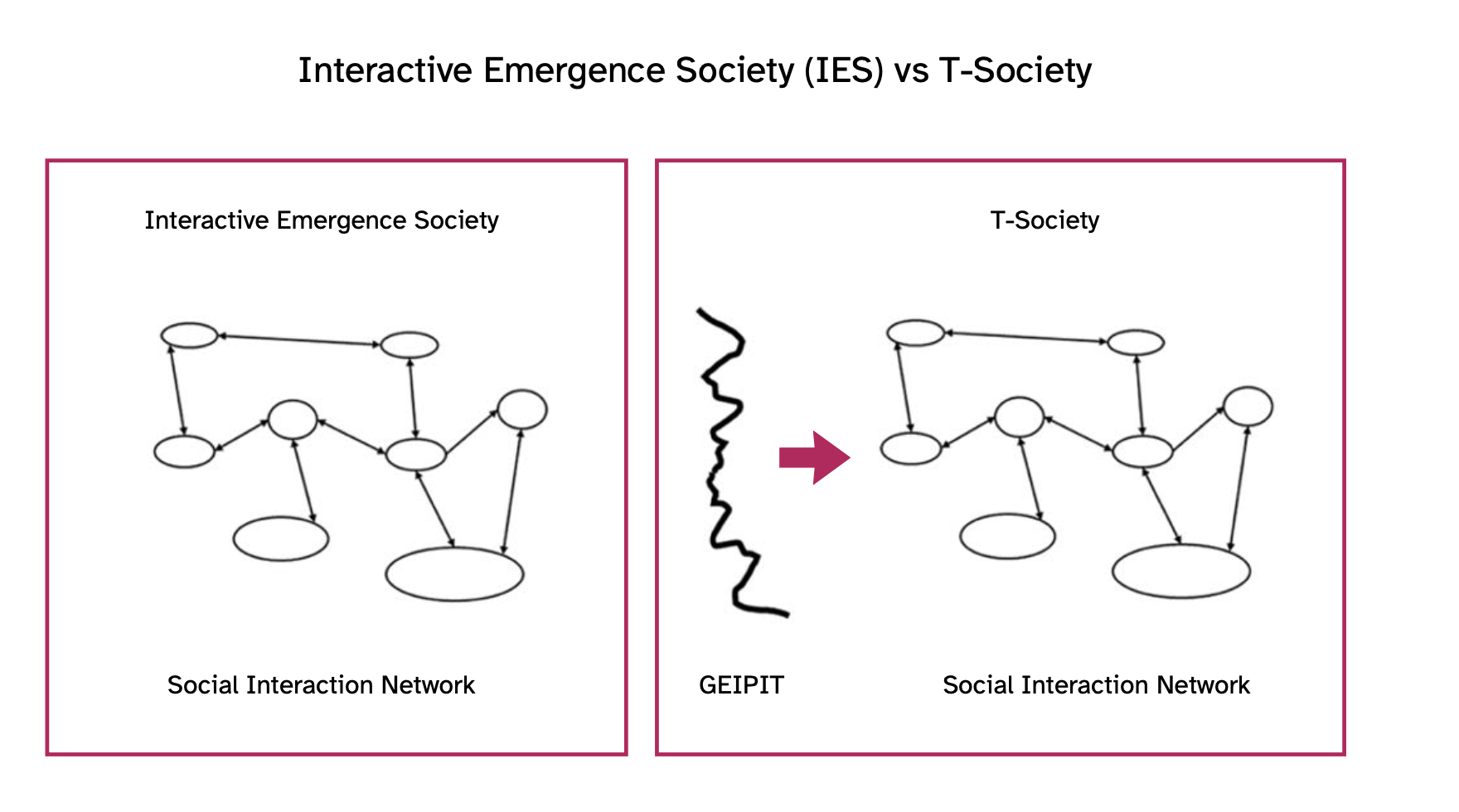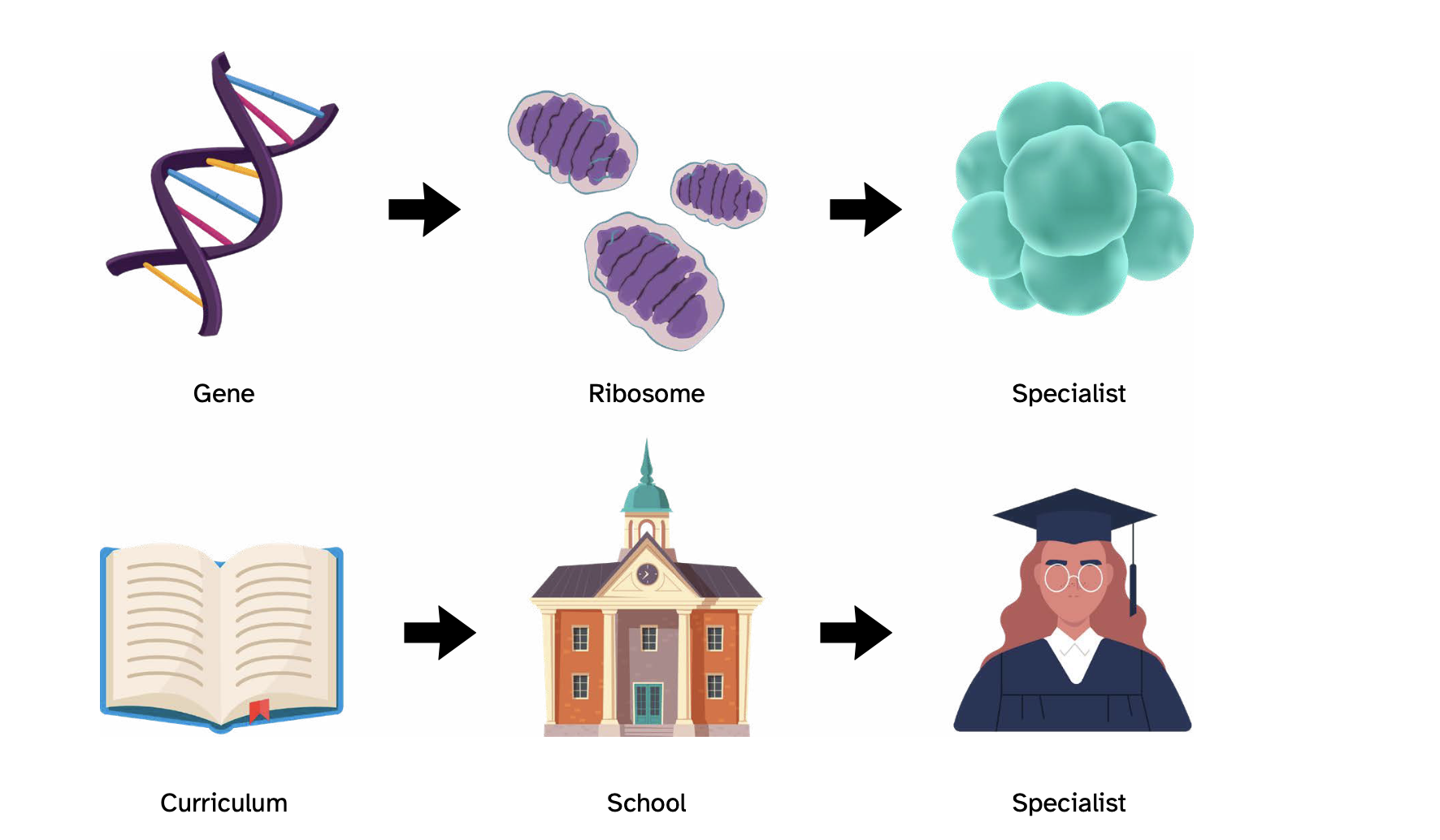T-patterns, T-societies, and unique social self-similarity from humans to proteins
Introduction
Humanity is threatened by a new kind of intelligent and functional “lifeform” we are trying to understand. It seems more urgent than ever to remember the ancient and classical advice, “Know thyself,” which is still far from being achieved. Who are we? The answer depends on which millions of humans are asked, ranging from being recent creations of a God in his image to an outcome of billions of years of self-organization from energy, atoms, and polymers.
This “new life form” of our own making is unlike anything seen before, not due to its differences but rather because of its similarities to humans. Importantly, it differs from previous machines that were confined to specific tasks or skills. It is capable of adapting to unpredictable situations and operates through autonomous learning and thinking. Moreover, even though all its internal processes are accessible, their complexity renders them incomprehensible to humans, a situation previously noted in relation to human behaviour:
‘If we look far into the future of our science, what will it mean to say we understand the mechanism of behaviour? The obvious answer is what might be termed the neurophysiologist’s nirvana: the complete wiring diagram of a species’ nervous system, with every synapse labelled as excitatory or inhibitory. Presumably, there would also be a graph for each axon that illustrates nerve impulses as a function of time throughout each behaviour pattern. This ideal represents the logical endpoint of many contemporary neuroanatomical and neurophysiological endeavours, and since we remain in the early stages, the ultimate conclusion does not concern us overly much. However, it would not constitute an understanding of how behaviour operates in any meaningful sense. No individual could retain such a vast amount of detail in their mind. Genuine understanding will emerge only from the distillation of general principles at a higher level, paralleling the great principles of genetics — particulate inheritance, continuity of the germ-line, non- inheritance of acquired characteristics, dominance, linkage, mutation, and so forth.’ Richard Dawkins, 1976, p. 7.
The artificial neural networks of modern AI, with billions of parameters, now imitate human behavior far more effectively than ever before. Nevertheless, even if all their parameters, resulting from learning probabilistic contingencies, are 100% accessible, it is typically impossible for a human individual to comprehend and utilise such a vast amount of information. Similar to humans and animals, understanding robots will likely necessitate an approach different from an all-knowing “nirvana.” As in all sciences, including nuclear physics, there must exist, at some level, “black boxes” to comprehend phenomena at a useful level of organisation.
Primarily motivated by the socio-biological work of primatologist Desmond Morris in the 1960s (notably *The Naked Ape* and *The Human Zoo*), along with the contributions of Niko Tinbergen, Konrad Lorenz, and Karl von Frisch, who were jointly awarded the Nobel Prize in 1973, this research and development commenced in the 1970s. It resulted in a behavior organization model (T-pattern) and algorithms implemented in AI software (THEME) by the end of that decade. After investigating the potential of multivariate statistics using standard statistical packages on IBM mainframes and evaluating the analyses provided at that time by artificial neuronal networks, there arose a need for a different type of analysis of real-time point series on discrete scales; that is, new pattern types with innovative detection algorithms. This was prior to the arrival of personal computers, relying instead on predecessors such as the PDP11 and 8, which had just 64 and 128 k of internal memory and 5-megabyte external hard disks. The resulting 3000-line Fortran IV software, named THEME, first detected T-patterns in video recordings of children’s dyadic interactions—patterns that were hidden from unaided observers and traditional statistical methods—was presented at an international workshop on Artificial Intelligence in 1981 at the University of Uppsala. In subsequent decades, T-pattern detection with THEME was applied to interactions in neuronal brain networks and eventually extended to physical strings (referred to as T-strings), such as texts, proteins, and DNA (Anolli, 2005; Magnusson, 2016, 2024; Casarrubea et al., 2015, 2018).
This directed attention to the self-similarity present only in modern literate societies, termed T-society, and a unique self-similarity with protein societies. This development occurred in two significant steps: the advent of writing (around 3000 BCE) and the rise of mass-specialisation (since around 1800 AD). For billions of years, atoms, molecules, cells, and countless species have self-organized into ever greater complexity. Only a biological split-second ago, humans became the sole species to organized their societies into a structure analogous to protein societies that had existed in all cells for billions of years. This transformation unfolded in two essential stages: the invention of T-string external memory (i.e., writing, about 5000 years ago) predating humanity’s awareness of cells, and nearly 5000 years later, the mass specialisation of individuals (primarily in the last two centuries) was established with curricula, long before humans understood genes producing specialised proteins. Was it, as had been the case for billions of years, self-organisation?
The T-Pattern in Time and on Strings
Initially defined by an algorithm (Magnusson, 1981, 1983), a T-pattern is a self-similar statistical (natural, approximate, pseudo) fractal binary tree. It exhibits a consistent statistical relationship, a critical interval, between branches at each non-terminal node. T-patterns recur with statistically significant translation symmetry, Fig 1. (Magnusson, 1983, 1996, 2000, 2016, 2020a, 2020b, 2023).

Temporal T-patterns in real-time interactions
Real-time T-pattern detection and analysis (TPA) with Theme software led to the discovery of far more complex patterns than expected in mostly nonverbal human and animal interactions and eventually also in neuronal brain networks (Nicol et al. 2005, 2015). Thus, complex and highly significant T-patterns were discovered (Anolli et al., 2005; Casarrubea et al., 2015, 2018; Magnusson et al., 2016, 2023).
T-strings, T-societies, and unique self-similarity
Attention then turned to physical strings of letters and polymers with T-patterns, called T-strings, detected in texts and proteins, and thus in RNA and DNA (Magnusson, 2004, 2020a, 2020b, 2023, 2024, 2025; Magnusson, 2023 Magnusson et al., 2023).
For billions of years, following the transition from the RNA world to the DNA world, protein specialists were created by ribosomes using DNA segments (T-strings), namely, genes that are external to the proteins. This type of society composed of various specialized individuals, defined by a Giant Extra-Individual Purely Informational T-string, or GEIPIT, is referred to here as a T-society, distinguishing it from Interactive Emergence Societies, or IES, which do not involve specialization through GEIPITs and were universal in the RNA world, among animals, and even most literate humans until recently (Fig. 2).
The development of extra-individual, infinitely extendable memory—namely, texts—commenced around 3000 B.C., thereby creating human GEPITS. Until recent centuries, these texts were confined to a small segment of each society. Standard religious and legal texts rendered individuals more uniform, but after approximately 1800 A.D., schools employing curricula, i.e., various GEPIT segments, began to differentiate individuals, resulting in specialists. With genes and curricula acting as T-prescripts, and ribosomes and schools functioning as T-shapers, the T-society specialization process follows the path of GEPIT → T-prescripts → T-shaper → specialist (see Fig. 3). This educational shift towards specialization may be as significant as the technological innovations of the Industrial Revolution.

“Nevertheless, in none of these systems was the development of skills that would be useful for adult professional occupations a primary consideration. Literacy rates over most of human existence were insignificant. Estimates from the Middle Ages, which are primarily based on the proportion of people who could sign their name on various documents, point to rates below 10 per cent in countries such as China, France, Germany, Belgium and the Netherlands, and even lower levels elsewhere in Europe and across the globe.” Oded Galor, 2022, Vintage Digital, Kindle edition.

Fig 3. See text. Note that memory, as DNA and text, is stored in one-dimensional inert strings, which become functional in three dimensions. With genes and curricula, as T-prescripts, and ribosomes and schools, as T-shapers, the T-society specialization process is GEPIT → T-prescripts → T-shaper → specialist.
“Arguably, in fact, this transformation of education was more significant and lasting than the mechanization of manufacturing, for it transformed education’s very purpose – and brought it for the first time to the masses.” Oded Galor, 2022, Vintage Digital, Kindle edition.
This transition in education thus coincided with a turning point in human history, with an explosion in world population size and multiple other parameters (see, for example, Galor, 2022, p. 4, and West, 2017, p. 211).
The self-similarity of human T-society with protein societies is observed solely in modern humans, rendering its abrupt emergence unique and a significant turning point in the natural history of the Earth.
At the present crossroads, humanity has assumed self-organization of life’s evolution from the beginning; the recent T-society self-similarity across billions of years suggests it is still ongoing.
References available
To read and download this eBook in full ‘Are we self-organized?’ click here


